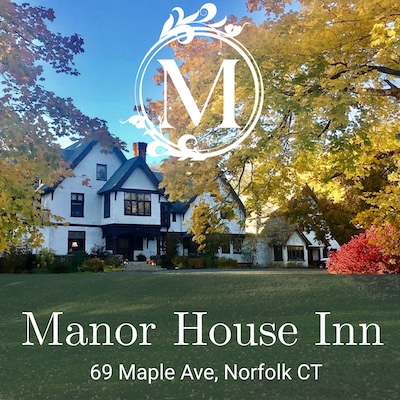November 19, 2024
Nearly everyone has a favorite Christmas movie, even if they don’t celebrate Christmas. And Connecticut—or the idea of Connecticut—has played a central role in Christmas movies throughout most of cinema history. In holiday classics from 1942’s Holiday Inn to the 2005 Sarah Jessica Parker vehicle The Family Stone, a snow-globe version of the Nutmeg State’s country charm competes for top billing no matter who plays the leading role. Never mind that a white Christmas in Connecticut is about as common as a red-nosed reindeer.
According to actress and film historian Illeana Douglas, “a huge part of the success of these films is the presence of the perfect Connecticut house.” Douglas recently hosted a screening of another movie whose focus is a Connecticut house, the classic screwball comedy Mr. Blandings Builds His Dreamhouse at Bantam Cinema and Arts Center. “So, it’s ironic that most of those houses were built on a Hollywood sound stage.”
Most, but not all. Because of Connecticut’s proximity to New York, its attractive film production tax credits, and the abundance of camera-ready architecture and quaint towns, a lot of the locations of these films are real, even if their names are not.
Douglas presented Mr. Blandings as part of Bantam Cinema and Arts Center’s new Storyteller Series, regular film screenings with special guests who often have a tie to the area such as actress/director Dorothy Lyman and actor/director Campbell Scott.

In her new book, Connecticut in the Movies: From Dream Houses to Dark Suburbia, Douglas, who lives in Haddam, devotes an entire chapter to Christmas movies shot and/or set in the state. In it, she claims the 1945 classic Christmas in Connecticut marks the first time the word “Connecticut” was used in the title of a movie. The film was inspired by the writing of Gladys Taber, who lived at Stillmeadow Farm, which is now part of the Southbury Land Trust.
Starring Barbara Stanwyck and Dennis Morgan, Christmas In Connecticut is also set in a made-up town, this time one called Stanfield, which Douglas suggests is a mash-up of Stamford and Litchfield. And even though the film was inspired by real people and places, Hollywood art directors were responsible for building the sets in California. Released just as troops were starting to return from World War 2, Christmas in Connecticut was what today we’d call a monster hit. Its popularity created an indelible—if somewhat idealized—image of hearth and home that now is so closely identified with Connecticut that Christmas movies set in the state number in the dozens.
“A slew of Hallmark Christmas movies has made Connecticut look like Santa’s backyard and a cozy place to spend the holidays—and, yes, still discover who you are,” Douglas says in the book, alluding to Connecticut’s other role throughout cinema history, which is to act as a setting for a movie’s protagonist to leave behind city life and learn about their true nature.
“The authenticity of the environment …brings about the realization that there is a better way to live.” We think that part, at least, is true.
To learn more about Connecticut’s fascinating role in the history of American cinema, signed copies of Connecticut in the Movies: From Dream Houses to Dark Suburbia are available for purchase at Bantam Cinema and Arts Center. Go online for tickets to BCAC’s Storyteller Series and regular showtimes, or to find out how to support BCAC, now in its fourth year of operation as a community-run nonprofit organization.—bantamcinema.org.
By Paul Marcarelli
Courtesy of Warner Brothers






















